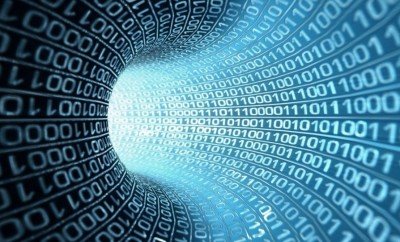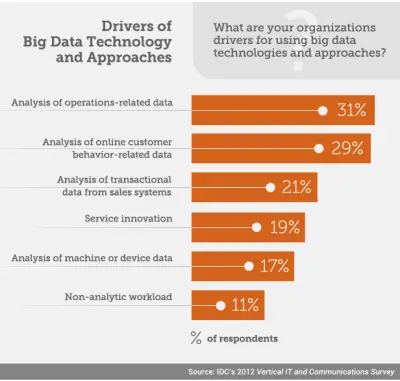Though Big Data is of use to almost every type of industry, including small-scale and even cottage industries, some sectors are already dependent on Big Data. They have long implemented or, rather, incorporated the Big Data – collection and analysis – into their systems to generate different types of reports for different end uses. This article focuses on these industries’ usage of Big Data and how Big Data is used. I already posted an article on Big Data basics, so this article does not repeat what is Big Data.
What are the Uses of Big Data
Business houses have long been dependent on whatever data they had to analyze trends, behavior (of goods and/or users), impacts and overall profits, etc. With the kind of data they now possess – thanks to the Internet – the computing goes beyond simple spreadsheets to provide them with many accurate results. Furthermore, Big Data enables them to perform more kinds of analysis to keep it a healthy and profitable business that is always on a path to growth.

Big Data Consumption
Industries Already Using Big Data: They Started Early
A] Financial Institutions: Mainly dealing with your money, these industries rely on Big Data to check previous trends and make predictions. Early data was less so predictions came with a bigger margin of risk. That risk is now reduced due to access to more data. Share markets, banks and other financial institutions may also be checking your spending methods to derive some sort of equation that helps you retain maximum profits. The following chart will assist you in understanding how financial institutions use Big Data. It will also give you an idea of how Big Data can be used.

B] Retail Marketing: The first thing that strikes mind talking about retail is the consumption of goods – area-wise or age-wise. Yes, you can use Big Data to tell how and who are using your goods and what types of goods. More than that, you can also focus on improving products and even introducing new products based on the ones that are succeeding. The other side of using Big Data in Retail Marketing is figuring out prospects (don’t forget the online window shoppers), prospect-to-client conversion rate and abilities or techniques, client retention, and similar areas.
C] Government and Public Sector: How can we forget the government regarding data? Govt. and public sector units collect data more than any other sector. You can say they are drowning in data even as they digitize and store the data onto their servers or clouds worldwide. According to a whitepaper by IDC
“As government leaders across the spectrum strive to become a data-driven organization to successfully accomplish their missions, they are laying the groundwork to correlate dependencies across events and track dependencies across people, processes, and information.”
Overall, this sector gains in terms of productivity as it can track the speed and accuracy of different projects being run by them. It can then analyze the data to find better methods of improving performance. There are quite a few other benefits, too, such as tracking people to serve them better healthcare, employment, etc.
D] Communications Sector: This is another area where Big Data plays an important role, from acquiring customers to enhancing or, at the least, maintaining the class of service being provided to them, recovery, and bad debts, too!
Since they want their services always up and running, they can use Big Data both for the above and in their own infrastructure to project potential growth as years go by. They come to know the bandwidth requirements, they would know about fake customers and customers no longer using their services (helps in bringing them back), risk mitigation in case of a sudden increase in demand and much more – virtually any part of the business you can think of.
E] Media and Entertainment Businesses: The main focus here is customer retention—sometimes more important than customer acquisition. Big Data helps determine what kind of media different users enjoy, and based on that, media houses develop better content of that type.
They focus on age groups and dividing the production of artifacts according to the analysis results. At the same time, they have to find out what kind of advertising do the different age groups engage with – instead of simply watching. Earlier, it was not possible to get that much data, but due to Internet Marketing Agencies and the compilation of data over the years, instead of just flushing it, they can make real-time decisions and take appropriate actions for both customers and staff. It is just the beginning. There are no limits on what all you wish to know. With the right kind of data in hand, you can always get accurate results.
The above tries to give you a glimpse into what are the uses of Big Data with examples of different industrial sectors. Read about Big Data 3 Vs next. If you have any doubts or with to add anything, please do comment below.